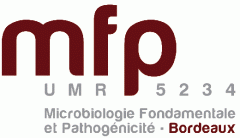Elucidating the Transport Mechanisms and Metabolic Roles of Serine, Threonine, and Glycine in Trypanosoma cruzi
Résumé
L-Serine (L-Ser) and L-Threonine (L-Thr) have versatile roles in metabolism. In addition to their use in protein synthesis, these amino acids participate in the biosynthesis pathways of other amino acids and even phospholipids. Furthermore, L-Ser and L-Thr can be substrates for a Ser/Thr dehydratase (Ser/ThrDH), resulting in pyruvate (Pyr) and 2-oxobutyrate, respectively, thus being amino acids with anaplerotic potential. Trypanosoma cruzi, the etiological agent of Chagas disease, uses amino acids in several biological processes: metacyclogenesis, infection, resistance to nutritional and oxidative stress, osmotic control, etc. In this study, we investigated the import and metabolism of L-Ser, L-Thr, and Gly in T. cruzi. Our results demonstrate that these amino acids are transported from the extracellular environment into T. cruzi cells through a saturable transport system that fits the Michaelis-Menten model. Our results show that L-Ser and L-Thr can sustain epimastigote (Epi) cell viability under nutritional stress (NS) conditions and can stimulate oxygen consumption to maintain intracellular ATP levels. Additionally, our findings indicate that l-Ser plays a role in establishing the mitochondrial membrane potential (ΔΨm) in T. cruzi. L-Ser is also involved in energy metabolism via the Ser-Pyr pathway, which stimulates the production and subsequent excretion of acetate and alanine. Our results demonstrate the importance of L-Ser and l-Thr in the energy metabolism of T. cruzi and provide new insights into the metabolic adaptations of this parasite during its life cycle
Fichier principal
 Alencar et al. - 2024 - Elucidating the Transport Mechanisms and Metabolic.pdf (1.15 Mo)
Télécharger le fichier
Alencar et al. - 2024 - Elucidating the Transport Mechanisms and Metabolic.pdf (1.15 Mo)
Télécharger le fichier
| Origine | Fichiers produits par l'(les) auteur(s) |
|---|---|
| licence |





